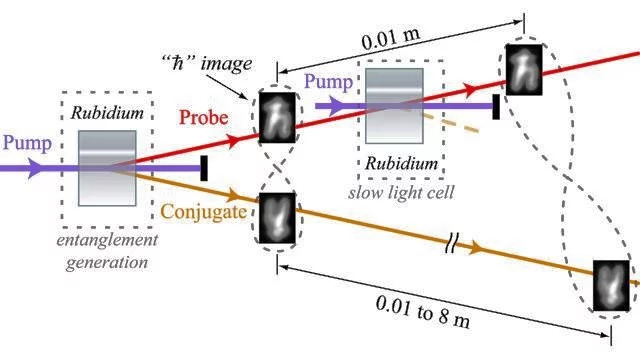Quantum entanglement is the key to quantum computing, cryptography, and numerous other real-world applications of quantum mechanics. It is also one of the strangest phenomena in the Universe, overcoming barriers of space and time and knitting the entire cosmos into an integrated whole. Scientists have long thought that entanglement between two particles was a rare and fleeting phenomenon, so delicate that exposure of the particles to their surroundings would quickly destroy this linkage. Now mathematicians at Case Western University have shown that entanglement between parts of large systems is the norm, rather than being a rare and short-lived relationship.
Entanglement is one of the strangest predictions of quantum mechanics. Two objects are entangled if their physical properties are undefined but correlated, even when the two objects are separated by a large distance. No mechanism for entanglement is known, but so far experiments universally show that nonlocal entanglement is real. When two entangled particles are subjected to the influence of a surrounding environment, their interactions with the surroundings cause the entanglement to "leak out" into the surroundings, so it is more difficult to detect and use, but it does not disappear.
Entanglement is clearly subtle, but how common is it in the real world of macroscopic objects? A new research paper from Professor Stanislaw Szarek's mathematics group at Case Western Reserve University addresses this question, and finds that entanglement is ubiquitous in large objects.
Their analysis is essentially statistical, where the quantum probabilities are studied using the tools of geometric functional analysis, a field of mathematics well suited for addressing problems associated with very large numbers of dimensions.
Systems of a few particles will tend to lie close to a pure state, a state in which none of the internal particles are entangled with each other. The particles of such a system will show essentially no sign of being entangled. You can create a state of a few particles in which the particles are entangled, but these states are quite unusual.
When you consider larger systems, perhaps having thousands (or trillions) of particles, the quantum description is essentially the same, but the way the quantum attributes of the system scale with size changes the probabilities considerably. Now the pure states form only a very small portion of the possible quantum states, and as a result, the more probable behavior is that parts of the system are entangled with each other.
Szarek's team also considered the entanglement of subsystems of an entangled system. If you choose two particles from a system, the chance that they are entangled is very small; in fact, vanishingly small in the limit of very large systems. On the other hand, if you split the system in two, these halves are almost certain to be entangled with each other.
In the end, their analysis shows that in systems having large numbers of particles, a pair of tiny subsystems tend not to be entangled with each other, but a pair of large subsystems tend to be entangled. If you consider two subsystems each having fewer than about one-fifth of the total number of particles in the overall system, the subsystems are almost certainly not entangled with each other. If the two subsystems are larger than one-fifth of the original system, they are almost certainly entangled. The abrupt change in entanglement behavior is characteristic of the geometry of high-dimensional spaces.
The result shows that everyday objects are so constructed that their parts are entangled with each other, and are also entangled with most everything with which they have previously interacted. This is an interesting result, particularly for those who think of the Universe in holistic terms, but does this holism have any observable consequences? This is a very difficult question, to which we don't yet have a practical answer.
Large-scale entanglement guides how our world evolves, often in crucial ways. However, predicting how a specific action might change that evolution appears impossible, at least in any practical sense. Such prediction simply requires too much knowledge about the microscopic state of the world. One might say, facetiously, that magic works, but usually has no real and/or predictable effect. At least, within quantum mechanics.
Sources: Case Western Reserve University, arXiv.






